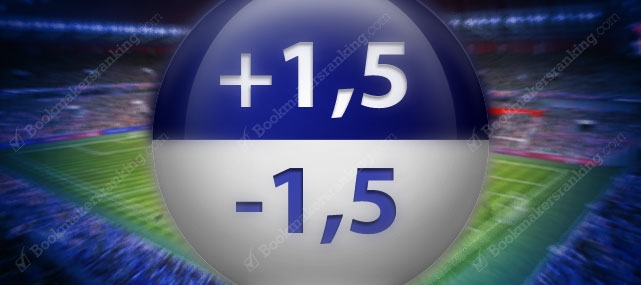Hey Folks, I thought I’d write a piece on handicap betting as it seems to have been one of the most recurring questions that has surfaced in my years tipping and blogging my bets.
Handicapping is a method of betting, popular when one team is a strong favourite, and traditionally the South African market punts handicaps on rugby and soccer. One selection in an event is given a “handicap” that needs to be overcome, making the odds longer as the outcome is now less predictable than a simple match outcome, which would have offered shorter odds. The handicap is a numerical figure set by the bookmaker, that takes into account all the factors, including strengths and biases, that would place a team as a favourite. Handicaps are set as negative and positive figures. The team with a negative handicap must win by more than the figure set by the bookmaker in order for your bet on them to win, while the team with a positive handicap simply needs to win, draw or lose by less than the figure set for your bet on them to win. As a punter, instead of simply betting on the more favoured or less favoured team to win or lose, you are now betting on them to win or lose by the margin dictated by the handicap (or draw).
In rugby, you get 2 and 3-way handicapping. Traditional, 2-way handicaps, eliminates the tie option. The more commonly used method is the 3-way; A favoured team will have a negative handicap, meaning that by betting on them, you are betting that they overcome that handicap to win. For example, if New Zealand play Ireland, and are favoured to win by a decent margin, the bookies may give them a handicap of -13.5, meaning they need to win by 14 points or more for your bet on them to pay off. Alternatively, if you have bet on underdog Ireland’s positive handicap (of say +13.5), three possible outcomes could see you win this bet: If Ireland wins, draws or simply loses by less than 14 points. Betting on the positive figure is seen usually as a more conservative bet, as it offers more possible outcomes. The value of handicaps now becomes obvious when applied, as you realise that while you may not get good odds on New Zealand to simply win outright, your odds will increase significantly by betting on them to overcome a handicap of two converted tries (14 points), conversely where you won’t get good odds on Ireland as loser (betting on NZ a outright winners), they will increase if you bet that Ireland will lose by less than 14 points or potentially pull off a win or draw.
Traditional (2-way) handicapping simply handicaps a favourite for a win or loss. So in soccer, for instance, the team deemed less likely to win, given the odds, is awarded a goal or the “favourite” is given handicap points before the match starts. So, the favourite will start with a handicap of -1, -2, -3, and so on, which they will need to overcome for your bet on them to win. Soccer also offers a 3-way handicapping system though, which then allows bettors to bet on a tie option. For instance, in a situation where Team 1 is favoured to win, they start with a -2 handicap. Team 2 has lower odds to win outright, so points awarded by the handicap level the odds, meaning Team 2 starts with +2. The handicap tie now is -2. Essentially you are betting on the team that wins by the margin specified by the handicap.
Now, where to find value in handicaps? I have always been of the belief that if a bet doesn’t jump out at you, don’t take it. But how would it jump out at you if you haven’t given the outcome of the game much of your own thought outside of looking at the odds and handicaps on your betting site? What I will always do, is write down my predictions for a match outcome based on my own knowledge as well as reading up on the game, before looking at the odds and handicaps on offer. This way, I work out my own margins to act as handicaps. I’ll then check the handicaps on offer on my betting sites,. If they align with my predictions, I’ll generally stay away, as there often isn’t value to be found when the bookmakers have got it right. However, if I feel the bookies have got it “wrong” so to speak, that is when a bet jumps out at me. A perfect example is the quarter final of the 2019 Rugby World Cup, where both myself and the MoneyBoy cashed in. The Springboks were facing Japan, and the bookies had the Boks favoured by -14.5 points, at odds of 1.90. If you know your rugby, you know that even though Japan were on a good run and the Boks hadn’t yet showed their full capacity by that stage of the tournament, the South Africans were always going to be at least 20 points better. They proved to be 23 points better on the day, winning 26-3, and so betting a healthy amount on the -14.5 points on offer paid off kindly, returning nearly double the stake.
Now, handicapping isn’t always going to prove to be the better option, as out-rights can be less risky. Sometimes points differentials between two sides are pretty unpredictable, but the winner of the clash is easier to predict. For instance, I felt the Boks would win the World Cup final, but never by the margin that they did. In this case, the outright bet was the safer option for me.
Stay safe
MoneyMan











